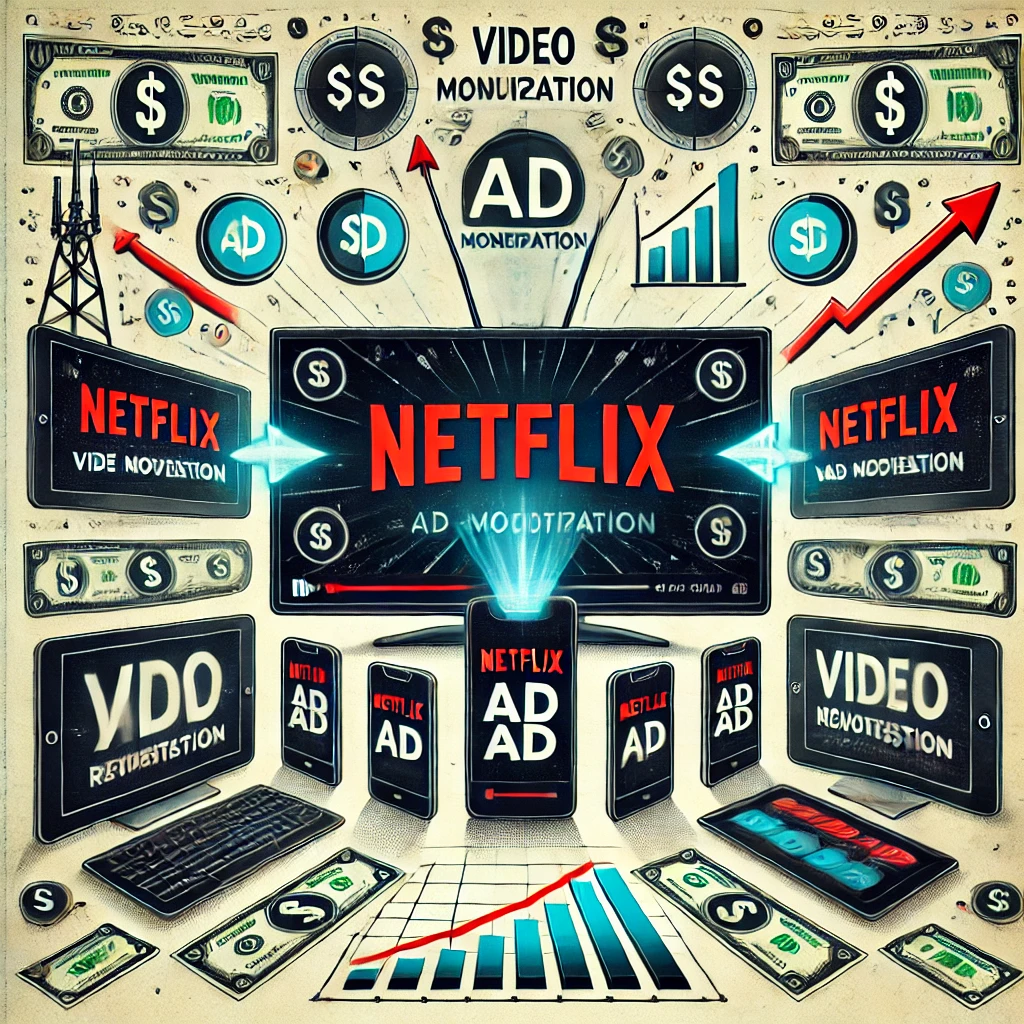A Guide to Optimizing Rewarded Video Ad Play
Rewarded video ads stand out in the crowded space of digital advertising by offering a value exchange between the user and the application. Instead of interrupting the user experience, they are designed to be a part of it, incentivizing user engagement by offering tangible rewards such as in-game currency, extra lives, or premium content.
The potential of rewarded ads to boost user engagement and ad revenue is substantial. From an ad revenue perspective, these ads often boast higher eCPMs (effective Cost Per Mille) than traditional ad formats due to their engaging nature and the value they provide to users. This means that rewarded video ads not only contribute to a positive user experience but also become a lucrative revenue stream for developers.
As we delve deeper into the mechanics of rewarded video ads and the strategies for optimizing their use, it’s important to keep in mind that their success hinges on a delicate balance between user experience and monetization objectives. Achieving this balance is the key to leveraging the full potential of rewarded video ads, making them a cornerstone of app and game monetization strategies in the digital age.
Understanding Rewarded Video Ads
Rewarded video ads are a form of advertising that offers users a specific incentive or reward in exchange for watching a video ad. Typically ranging from 15 to 30 seconds in length, these ads are intentionally placed within the app or game environment, offering users a clear value proposition: watch a short ad and receive a reward. The rewards can vary widely depending on the application’s context but often include in-game currency, additional content, premium features for a limited time, or extra lives in a game.
Once the user opts to view the ad, the video plays in full, after which the promised reward is granted. This process not only respects the user’s autonomy but also enhances their engagement with the app or game by offering tangible benefits.
Benefits for Users and Developers
- For Users: The primary benefit of rewarded video ads for users is the ability to access premium content without having to make in-app purchases. This model democratizes access to features that would typically require payment, thus enhancing the overall user experience and satisfaction. Additionally, because users have the choice to engage with these ads, the interaction feels less like an advertisement and more like a beneficial exchange.
- For Developers: Developers stand to gain significantly from integrating rewarded video ads into their apps. The most direct benefit is an increase in ad revenue, driven by high engagement rates and eCPM. Furthermore, rewarded ads can contribute to better app retention rates, as users have a tangible incentive to return. This dynamic not only boosts short-term revenue but also builds a more engaged and loyal user base over time.
Strategies for Optimizing Rewarded Video Ad Placement
Continuing A Guide to Optimizing Rewarded Video Ad Play post, The strategic placement and timing of rewarded video ads is important. Thoughtful integration ensures that ads feel like a natural part of the app’s flow, rather than an interruption. The goal is to present these ads at moments when users are most receptive, thereby increasing the likelihood of engagement. For instance, placing an ad offer after a user has completed a level or accomplished a task within an app can feel like a natural break.
Tips for Seamless Integration
Contextual Placement: Align the rewarded ad offerings with the user’s current activity within the app. For example, offer extra lives through rewarded video ads right after a user loses a game level.
User Choice and Control: Empower users by giving them the choice to watch rewarded ads at their convenience. Avoid automatic ad triggers that can lead to frustration and potentially drive users away from your app.
- Transparency and Clarity: Clearly communicate the rewards users will receive for watching the ads. This transparency builds trust and encourages more frequent engagement with the ad content.
- Visual Cues and Triggers: Use eye-catching visual elements to draw attention to the rewarded ad opportunity without being too intrusive. An attractive icon or a brief, animated prompt can effectively pique user interest.
Testing and Optimization Strategies
- A/B Testing: Conduct A/B tests by varying ad placements across different user segments. This approach allows for data-driven decisions that can significantly impact the success of your rewarded video ad strategy.
- Performance Metrics Analysis: Closely monitor key performance indicators (KPIs) such as click-through rates (CTR), conversion rates, engagement rates, and overall revenue impact. This analysis will reveal which placements are most effective and should be prioritized.
- User Feedback: Solicit and incorporate user feedback on ad placement and rewards. Direct input from users can provide valuable insights into their preferences and tolerance levels for ad integration within the app.
- Continuous Iteration: The digital landscape and user behaviors are always evolving, so it essential to regularly review and adjust your rewarded video ad placement strategy. Stay adaptable and be prepared to make changes based on the latest trends, technology advancements, and user engagement data.
Enhancing User Experience for Higher Engagement
Continuing “A Guide to Optimizing Rewarded Video Ad Play” post, the integration of rewarded video ads requires a focus on user experience (UX). An optimal UX ensures that rewarded ads are not only accepted by users but are actively sought after. This delicate balance hinges on the perception of value received versus the time spent watching ads. When done right, integrating rewarded video ads can significantly enhance engagement, encouraging users to interact more deeply with the app or game.
Making Rewards Desirable and Relevant
- Understand Your Audience: Tailor rewards to match the interests and needs of your user base. Utilize user data and behavior analytics to identify what motivates your users most, whether it’s in-game currency, exclusive content, or additional features.
- Variety and Surprise: Keep users engaged by offering a variety of rewards or incorporating elements of surprise or randomness. This can keep users curious and more inclined to engage with rewarded ads regularly.
- Clear Value Proposition: Ensure that the value of the reward is commensurate with the time spent watching the ad. Users should feel that they are making a worthwhile exchange, which can be achieved by aligning the reward value closely with user expectations.
Balancing Rewards and Revenue Goals
- User Segmentation: Employ user segmentation to offer more personalized ad experiences. Different user groups may value different types of rewards, and tailoring your approach can lead to higher engagement.
- Frequency and Capping: Limit the number of times rewarded ads are shown. This prevents ad fatigue, maintains user interest, and ensures that the rewards remain appealing over time.
- Feedback Loops:- Create mechanisms for gathering user feedback on rewarded video ads directly within the app. This can provide invaluable insights into user satisfaction..
- Dynamic Ad Serving:- Utilize technologies that dynamically adjust the type and frequency of rewarded ads.. This can help maintain an optimal balance between user satisfaction and revenue generation.
Last but not least, on my “A Guide to Optimizing Rewarded Video Ad Play post”, I have a shamless insertion!-). AppLixir integration of rewarded video ads provides a unique opportunity to enhance your monetization goals. By focusing on the user experience, developers can create a positive perception of rewarded ads. Check our site at www.applixir.com for more information!


